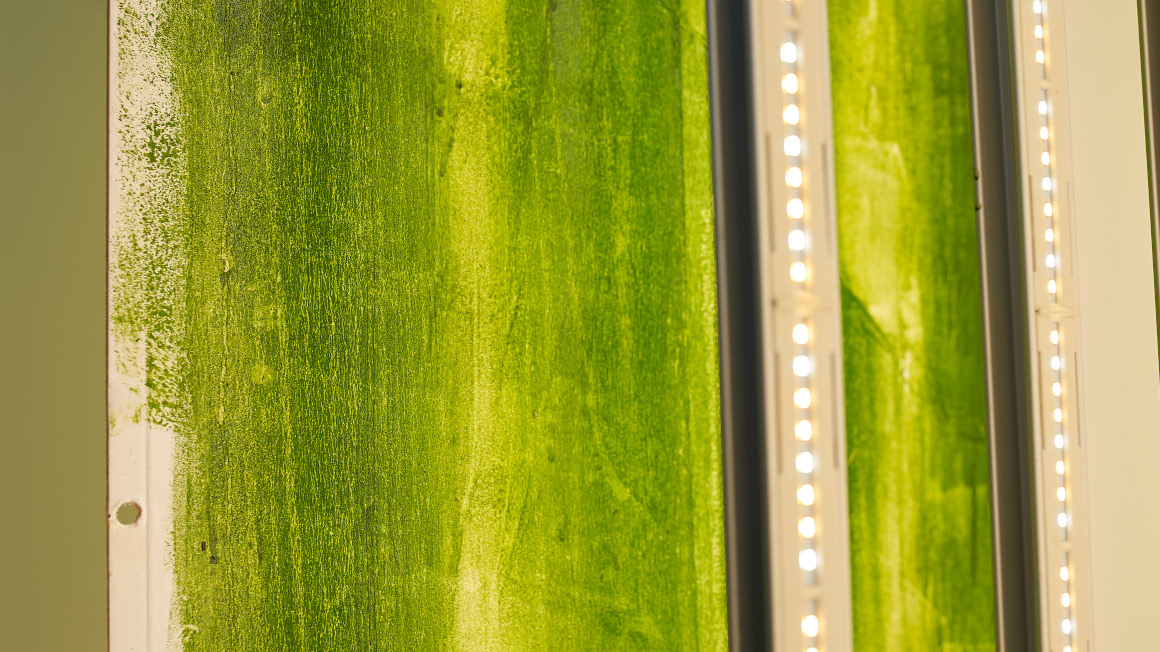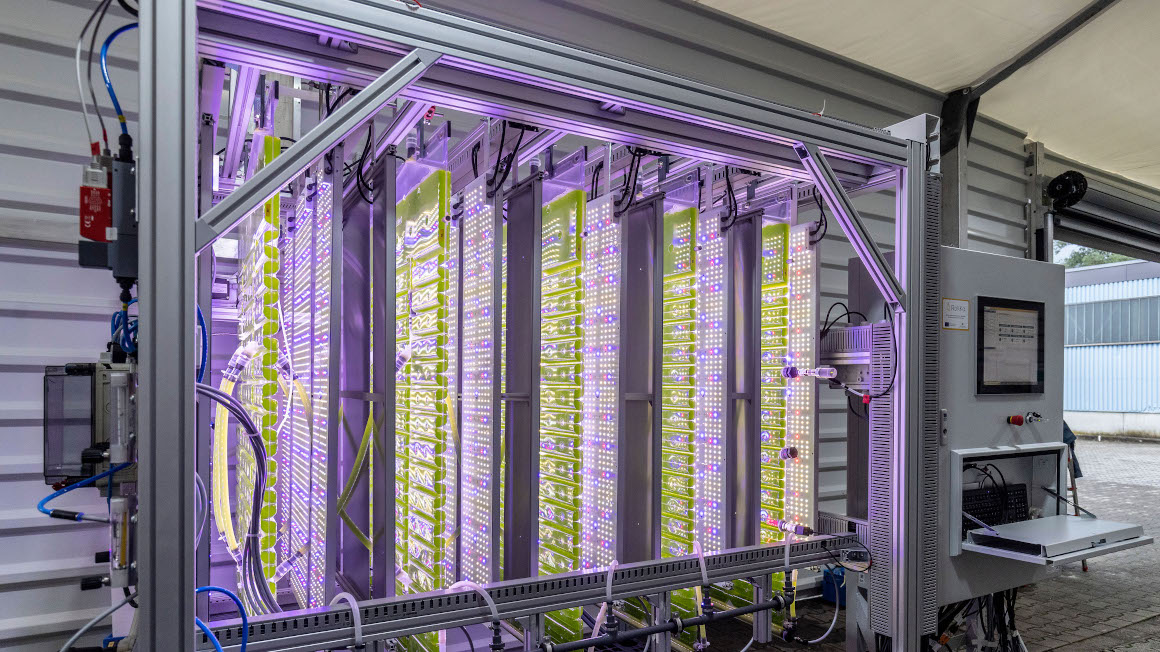Cleaning wastewater with microalgae biofilm
Researchers at Cologne University of Applied Sciences have commissioned a pilot plant to test the cultivation of microalgae in a biofilm to purify landfill leachate.

Microalgae are seen as the beacon of hope for the bioeconomy. Sunlight, carbon dioxide and water are enough for these tiny creatures to produce enormous quantities of biomass in a short space of time, which can be used for both material and energy purposes. Microalgae not only bind large quantities of carbon dioxide. As they can also absorb pollutants, microalgae have proven their worth as wastewater purifiers. It is precisely this potential that researchers in the project "ERA3 II – Efficient resource utilization in wastewater from waste management using algae cultures" are exploiting.
Cleaning landfill leachate with microalgae
"In North Rhine-Westphalia alone, there are 428 landfills that produce around six million cubic meters of landfill leachate every year," explains project manager Miriam Sartor from the :metabolon Institute at Cologne University of Applied Sciences. "This is precipitation that seeps through the landfill and can absorb large quantities of environmentally harmful substances such as ammonium." The aim of the project is to filter these pollutants from landfill leachate in municipal sewage treatment plants.
Pilot plant goes into operation
In the first phase of the project, the team was able to show that microalgae can be cultivated not only in highly diluted wastewater, but also in highly contaminated wastewater. In the second phase, which has just started, the researchers now want to test the effectiveness of algae cultivation as a supplementary process for wastewater treatment in a pilot plant. The team is pursuing a completely new approach. When cultivating microalgae on an industrial scale, the algae are normally free-floating in a nutrient solution or in wastewater. Although this so-called suspension-based cultivation is cost-effective, it is limited by the usually cloudy landfill leachate, as the algae floating in the wastewater do not get enough sunlight, the researchers write.
Algae cultivation tested in biofilm
In the project, the microalgae are therefore cultivated in so-called biofilm-based cultivation systems, in which the algae strains can settle and grow on a surface. The advantage: as the biofilms settle both above and below the water surface, this opens up new possibilities for system planning and the biomass is concentrated in a natural way, which makes harvesting and further processing easier. According to the researchers, the algae cultures are also more resistant to stress factors in extreme habitats such as contaminated landfill leachate, as they can better isolate themselves from their environment in the biofilms.
The pilot plant will initially test how algae cultivation works in a biofilm in landfill leachate. The process will then be monitored and optimized in terms of nutrient degradation, metabolic activities, biomass production and utilization as well as operating costs. "At the end of the project, we want to obtain sound findings on whether and how large-scale implementation is ecologically sensible, effective and economically feasible," says project manager Sartor. The project will run until 2025 and is being funded by the North Rhine-Westphalia State Agency for Nature, Environment and Consumer Protection (LANUV) with 160,000 euros over a period of two years.
bb


